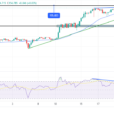For a central bank, deflation is the starting point which makes inflation the emphasis. So long as there is a “small” amount of positive inflation then economists have suggested deflation, thus depression, becomes impossible. The reason for that belief is twofold, first having to do with the margin for “error”; that is a small positive inflation rate acts as a buffer with which monetary policy can react before any disinflationary impulse or shock gets out of hand.
Primarily, however, the assumptions of orthodox economics are built upon expectations regimes. By targeting a 2% inflation rate and keeping to it, a central bank builds up a long-term “anchor” for private economic agents’ expectations for future inflation conditions. As long as people expect a credible monetary response that central banks will over time smooth out any variations (transitory) it will be difficult if not impossible for deflation to take hold since everyone simply assumes that whatever in the short run 2% is the future. This is critical in mainstream monetary theory, which is why you hear Janet Yellen and Fed officials refer to the “anchor” quite often; it is, in fact, placed in every FOMC statement and minutes for that very reason.
The inclusion of verbiage about the anchor is quite different in the past few years, however, simply because market-based inflation expectations are acting as if there is no longer any anchor attached to the 2% target. This is a shock to economists at least as far as how they talk about it in public, though it shouldn’t be surprising since the Fed hasn’t been close to its target in several years and below it consistently for now more than four. To counteract this growing distrust about Fed efficacy and ability, the FOMC repeatedly references some hidden supply of “professional forecasters” who continue to see no movement in the long run inflation “anchor” no matter how much markets continue to disagree.
In the realm of moving inflation expectations, there was a period between July 2013 and August 2014 where the 10-year TIPS breakeven “yield” did nothing. The 5-year breakevens followed in somewhat similar fashion, though with a small measure of greater vitality if still almost totally sideways. How this thirteen month period in inflation measuring has escaped constant mainstream reference is yet another crime of negligence. Not only did the market for inflation expectations suddenly appear to be dead or at least stumped, this all occurred at perhaps the most pivotal point of this entire “recovery” period.
From the middle of 2013 forward, the Federal Reserve (as ECB and other central banks) judged their primarily 2012 responses as taking hold and thus fostering the relevant predicates for normalization – the recovery at long last was, they believed, coming into actual view. Yet, while that was supposedly happening in their eyes, credit and “dollar” markets were moving in the opposite direction. At the crucial juncture between policy and economy in inflation expectations these competing tendencies met.












Leave A Comment